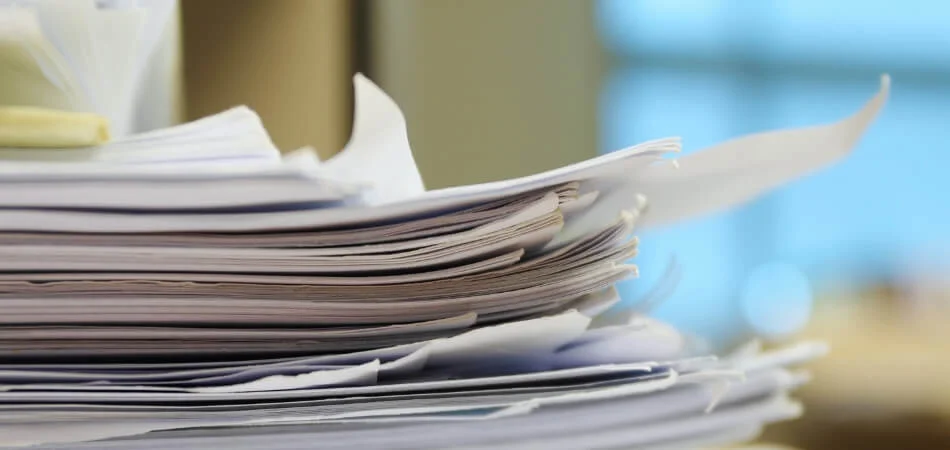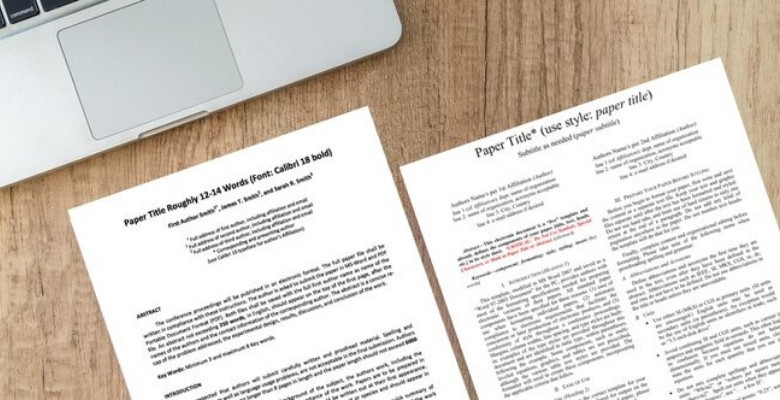Conference papers are written to fit into a short time slot during events. Readers often wonder about the length and sometimes have the question in mind: how many pages is a 15 minutes conference papers? This concern is common and important for presenters.
A 15-minute conference paper is typically 6 to 9 double-spaced pages long. This equals about 1,500 to 2,250 words, depending on your speaking speed. Aim for 7 to 8 pages for best results, and always read aloud to test timing. Practicing ensures smooth delivery and keeps you within limits.
Do you want to know how timing, formatting, and speaking pace affect your paper length? Keep reading this article, because here you will find every important detail that explains how to prepare and deliver a conference paper effectively.
How Many Pages is a 15 Minutes Conference Papers?
Writing a paper for a conference always raises one big question. People often wonder how many pages are right for the time. Having too many words can make it feel rushed. Let’s look at the details that will keep things balanced.

Safe Range
A 15-minute paper usually fits best within 6 to 9 pages. This length is based on double spacing, which is common for such papers. Staying in this range makes sure you have enough detail. It also prevents your talk from running too long or too short.
Word Count
In most cases, 1,500 to 2,250 words is a reliable amount. This range gives you a clear guide for writing without guessing. Reading aloud always takes longer than silent reading, so keep that in mind. Words add up quickly, so planning carefully saves you from stress.
Ideal Target
The best choice is usually aiming for 7 to 8 pages overall. This keeps your paper balanced and easy to follow for the audience. Going for this middle point helps you stay safe over time. It also gives enough space to explain ideas in detail.
Time Buffer
Leaving 30 to 60 seconds at the end is very useful. This extra space helps if you speak more slowly or pause often. It also keeps your talk steady and less stressful to deliver. Having a buffer makes sure you finish comfortably within the given slot.
Practice Reading
Doing a full read-aloud is the best way to test timing. Silent reading often makes you think the paper is shorter than it is. Reading out loud shows where sentences may need changes or cuts. Practice helps you get the rhythm and flow just right.
Speaking Pace
People naturally speak at different speeds, which can affect the total length. Someone who talks fast can cover more words than a slow speaker. Knowing your pace helps you set the right number of words. This way, your talk stays clear and easy to follow.
Cutting Content
Many drafts are longer than needed at the start, which is fine. Trimming details that do not serve your main idea makes it stronger. For example, at international educational conferences, presenters are often advised to focus sharply. Careful editing makes your talk more focused and easier to deliver.
Final Read
Doing one last timed read-through is the best final step for success. This shows if your paper fits within 15 minutes without problems. Timing yourself gives confidence and shows where small fixes are needed. A complete practice run makes sure you are fully prepared.
A paper that matches the time always feels clear and smooth. Staying within the safe page or word range helps a lot. Practicing aloud prepares you to handle timing with ease and confidence. Careful planning makes your presentation strong and enjoyable to hear.
Conference Paper Formatting Rules That Affect Page Count
Preparing a conference paper involves paying attention to small formatting rules that can affect its length. These details may seem minor, but they determine how pages are counted. Following them ensures your paper looks professional and meets conference standards. Let’s explore the main points to keep in mind.
Font Size
Most conferences expect you to use a standard 12 pt font size. This choice is not about style but about making reading comfortable. Using smaller fonts may fit more words, but it looks unprofessional. A proper font size also ensures your paper is accepted without problems.
Line Space
The required spacing is usually double spacing for most conference papers. This rule makes the text easier to read during presentations or reviews. Extra spacing also leaves room for notes or comments if needed. It ensures a clean look and keeps the length consistent.
Margins Set
A common rule is to keep 1-inch margins on all sides of the page. Margins create balance and make your paper look neat and professional. If margins are smaller, pages may hold more words than allowed. Keeping margins correct ensures your paper meets proper formatting standards.
Page Words
An average double-spaced page holds about 250 to 300 words. This helps you estimate the total length of your paper better. Knowing this average word count saves you from miscalculating your final size. It also keeps your timing close to the planned slot.
Extras Count
References, tables, or appendices usually do not count toward the page limit. These parts are important but are seen separately from the main text. Most conferences care about the body of your paper only. Knowing this rule helps you plan and structure your content better.
Formatting rules are just as important as the paper content itself. Following these rules helps your work look neat and professional. They also make your paper match the standards used by conferences. Careful attention keeps your paper ready for any review.
What Speaking Pace Works For Conference Paper Timing?
Giving a conference paper requires careful attention to your speaking pace, as it makes a big difference. Talking too fast can confuse the audience, while speaking too slowly may waste time. Finding the right rhythm helps your ideas come across clearly. Let’s check how pace affects page count.
Slow 100
At around 100 words per minute, the delivery feels calm and careful. This slower style often covers only about 5 to 6 pages in 15 minutes. It works well for speakers who like pausing often. The slower pace gives more room for reflection and clarity.
Medium 120
A pace of about 120 words per minute is fairly comfortable. With this speed, you will usually cover 6 to 7 pages easily. It offers a nice balance between clear delivery and steady progress. Many presenters find this speed works best in formal conference settings.
Typical 130
The average pace for most speakers is about 130 words per minute. At this speed, your paper length usually falls around 7 to 8 pages. It allows natural pauses while still keeping the flow moving well. Many conference presentations are designed with this timing in mind.
Fast 150
Speaking quickly at 150 words per minute can reach 8 to 9 pages. This pace can fit more material, but may feel rushed to listeners. Fast speakers must be extra clear to avoid losing the audience. This style works only if clarity stays consistent throughout.
Clear Range
Most conferences expect a speaking range of 120 to 140 words per minute. Staying in this window keeps your talk clear and easy to follow. It avoids the risks of being too slow or too fast. This range works well for nearly every type of presentation.
Timing a paper depends on both page length and speaking pace. A slower style means fewer pages, while a faster one fits more. Staying within the clear range keeps your audience comfortable and engaged. Practicing aloud helps you find the best pace.
How Should I Practice a Conference Paper Delivery?
Preparing for a conference paper takes more than just writing the text. The way you deliver it matters just as much as the content. Practicing helps you feel confident and keep time under control. Here are some easy tips that will help you prepare.
- Timed Run: Reading your paper from start to end in one go helps test actual timing. Silent reading can be misleading, so always use your natural speaking voice for the check.
- Aim Length: Setting a target of 14 minutes gives you a helpful buffer. This leaves space for pauses, slight delays, or unexpected interruptions without running over.
- Mark Cues: Adding clear marks for slides, pauses, or changes keeps the delivery smooth. These simple cues guide you during speaking and reduce the chances of mistakes.
- Cut First: Trimming the weakest 10% of your draft strengthens the talk. Removing extra parts makes your points sharper and easier for the audience to follow.
- Record Check: Using a phone or recorder helps you spot stumbling areas. Listening later shows where you need smoother phrasing or pacing adjustments.
- Body Practice: Practicing with gestures and posture builds confidence during delivery. Standing tall, making eye contact, and using natural movement improve audience connection.
- Repeat Often: Going through your paper multiple times makes you more comfortable and confident. Repetition helps you remember cues, reduce mistakes, and deliver a steady flow.
Practicing is the best way to make your talk strong and clear. Small steps like trimming, timing, and marking cues make a huge difference. Confidence grows each time you practice with focus and effort. Preparation always leads to better delivery results.
What Minute Outline Guides a Conference Paper Talk?
Delivering a talk with a limited time needs careful planning from the very start. Many speakers struggle with dividing minutes between different sections fairly. A simple outline makes the timing clear and the delivery smooth. Let’s look at how you can organize your paper talk.
0–1 Start
The first minute should be focused on a strong opening hook. This is the moment to grab attention and make a clear promise. Keep it short, interesting, and easy for the audience to connect. A good opening sets the tone for everything that follows.
1–3 Problem
Within these two minutes, make the problem easy to understand for everyone. State it clearly without adding too many details or heavy terms. The problem must sound important and worth solving. Once it is clear, the audience will naturally want to know your solution.
3–7 Method
Explaining your method should take about four minutes in total. Keep the steps simple, direct, and easy to follow without extra complications. When you structure a conference paper in a clear way, it becomes easier to map that structure onto a timed outline for your talk. This helps your explanation flow smoothly.
7–12 Results
This section should highlight only two or three important results. Avoid trying to fit everything because too much can overwhelm your listeners. Focus on the most meaningful results that directly connect back to your problem. Using clear language makes your points stronger and easier to remember.
12–15 Close
The last three minutes are for wrapping up and giving takeaways. Summarize your main points without repeating everything word for word. Offer one or two clear lessons the audience should remember. End with confidence, leaving your listeners with a clear closing thought.
A timed outline makes your presentation more effective and easier to follow. Dividing minutes wisely keeps the talk steady and interesting. Each section builds on the previous one for smooth flow. Careful planning always leads to a stronger conference paper talk.
Download PDF sample for a ready-made outline example you can use.
Which Mistakes Can Overrun a Fifteen-minute Conference Paper?
Many speakers worry about running out of time during their talk. The problem usually comes from small mistakes in writing or delivery. Some errors can make your paper longer than expected without you noticing. Let’s look at the most common mistakes to avoid.
Overwriting
Having a draft that runs 10 to 12 pages will cause problems. This length is too much for a 15-minute talk. Even if you speak quickly, the extra words make the timing fail. Keeping your draft shorter helps you stay within the slot.
Tiny Fonts
Trying to shrink your words with small fonts makes the paper harder. It may look like you fit everything, but it hurts readability. Reviewers and listeners expect clear size rules, usually 12 pt. Following this rule ensures fairness and prevents timing issues later.
Word Reading
Delivering every single word on the page slows the talk. Reading word-for-word also makes the speech sound flat and less natural. Instead, focus on highlighting main points and explaining naturally. Practicing aloud helps you learn where to pause or shorten.
Dense Slides
Using slides with crowded blocks of content makes timing messy. The audience struggles to read while you try to explain too much. Slides should only show simple cues, not full text. Clear and focused visuals keep your timing on track.
Weak Close
Ending without enough time leaves your closing rushed or even skipped. A weak finish makes the whole talk feel incomplete. Saving at least two minutes ensures space for clear takeaways. A strong closing leaves the audience with a final lasting thought.
A good talk needs both planning and careful practice to stay on time. Avoiding common mistakes helps your delivery feel smooth and professional. Small choices like page length or slide design make a big difference. Proper timing always improves the audience experience.
How Conference Talks Differ From Keynote Speeches?
Not every talk at a conference is the same in style or goal. Some are short and focused, while others are long and inspiring. The audience also expects different things depending on the type of session. Let’s explore how conference talks compare with keynote speeches.
| Aspect | Conference Talk | Keynote Speech |
| Length | Usually 15–20 minutes | Often 30 minutes to 1 hour |
| Content Focus | Detailed research, methods, and specific findings | Broader themes, inspiration, and big-picture ideas |
| Speaker Role | Researchers, professionals, or experts in a field | Leaders, role models, or specially invited speakers |
| Audience Expectation | Listeners expect clear explanations, data, and results | The audience expects motivation, vision, and engagement |
| Style | Formal, structured, and time-controlled with slides | Engaging, story-driven, and inspirational delivery |
Length and Time
A normal conference talk often lasts about 15 to 20 minutes. These talks are short because many presenters need time in one session. Keynote speeches, on the other hand, can run much longer. They may take 30 minutes to an hour.
Focus of Content
In most conference talks, the focus stays on research, study, or findings. Speakers usually share very specific details about their work or topic. Keynote speeches highlight broader themes, ideas, or inspiration. They are less about detail and more about creating a big picture.
Speaker Role
Conference presenters are often researchers, teachers, or professionals sharing their results. Their role is to explain and clarify their own work. A keynote speaker is usually chosen as a leader or role model. They are invited to inspire and guide a wide audience.
Audience Expectation
People listening to a conference talk expect information and clear explanations. They want to understand results, methods, and conclusions in detail. A keynote audience expects vision, motivation, and connection. Knowing the purpose of a keynote speech helps you see why a paper presentation is expected to be tighter and shorter, often fitting into about 6 to 8 pages.
Presentation Style
Conference talks are usually formal, clear, and closely timed with slides. They must stay structured so the session runs smoothly. Keynote speeches feel more open and engaging and sometimes include stories. Their style is about connection and inspiration as much as knowledge.
Conference talks and keynote speeches share a stage but serve very different goals. One is about detail and results; the other is about vision and impact. Both are important parts of any event. Understanding the difference helps you prepare correctly.
FAQs About How Many Pages is a 15 Minutes Conference Papers?
When writing a paper for a 15-minute conference talk, it is common to have a lot of questions about length, structure, and delivery. These frequently asked questions give you simple answers that will help you prepare better. Each answer is explained in clear words so you can understand the details without confusion, including guidance on how many pages is a 15 minute speech so you can match your content with the time.
Can I Use Bullet Points Instead of Full Sentences in My Paper?
Yes, you can use bullet points in your draft, but it is better to turn them into full sentences when reading aloud. Bullet points help you outline ideas quickly, but they may sound incomplete if read word-for-word. A paper with complete sentences flows better for your audience. You can still keep short notes on your slides as simple reminders.
Does the Type of Conference Change the Page Length?
Yes, the type of conference can affect how long your paper should be. Research-focused conferences may expect more detail, while professional or public events prefer shorter, clearer talks. Always check the conference guidelines because they sometimes set their own limits. Following their rules will keep your paper safe from rejection.
Should I Include Visual Aids in My Paper?
You do not have to include visuals in the paper itself, but you can prepare them for your talk. Slides or charts can help explain points that are hard to follow with only words. They also keep the audience interested and focused. Just make sure the visuals are simple and easy to read.
How Do I Decide Which Content to Keep or Cut?
Focus on the main idea you want the audience to remember. Keep details that directly support your argument or research and cut anything that feels extra. It is normal for the first draft to be longer, and trimming makes it sharper. This way, your paper stays clear and on time.
Is It Okay to Read the Paper Word for Word?
It is allowed, but reading every single word can sound flat and robotic. A better way is to know your paper well and use natural pauses and changes in your tone. This keeps the audience more engaged with what you are saying. Practicing aloud will help you deliver smoothly even if you read most of it.
How Early Should I Finish Writing the Paper?
It is smart to finish at least one week before the conference. This gives you time to practice, adjust timing, and make edits without stress. Rushing at the last moment often leads to mistakes or going overtime. Finishing a paper early makes you more confident.
Do References Count Toward the Time Limit?
Most of the time, references at the end do not count toward the spoken part of the paper. You are not expected to read every reference out loud. You only mention key sources briefly if needed. This keeps the focus on your main message while showing that your work is well supported.
Can I Share My Paper With the Audience Beforehand?
Yes, many conferences allow you to share your paper or slides before the talk. This helps the audience follow along and prepare questions. It also shows that you are organized and professional. Just make sure you check if the conference has rules about sharing.
What Happens If I Speak Faster Than Planned?
If you speak faster, your paper may finish too early and feel incomplete. The audience might not have enough time to understand your points. Practicing helps you find a steady pace that matches the paper length. Aim to stay calm and speak clearly instead of rushing.
Why Is Practicing With a Timer Important?
Using a timer gives you a clear idea of how your paper fits within the 15 minutes. Without timing, you may think the paper is fine, but end up too long or too short. A timer shows you exactly where to slow down or cut content. This small step makes your delivery much smoother.
Conclusion
Managing time for a paper is about finding a balance between details and clarity. The right length helps you stay clear, confident, and within schedule. The short answer to how many pages is a 15 minutes conference papers, is between 6 to 9 double-spaced pages.
To end smoothly, always practice aloud, trim extra content, and leave a buffer for pauses. Mark cues on slides, aim for clear flow, and test timing. With good planning and practice, your talk will feel polished. Best wishes for your next presentation.








